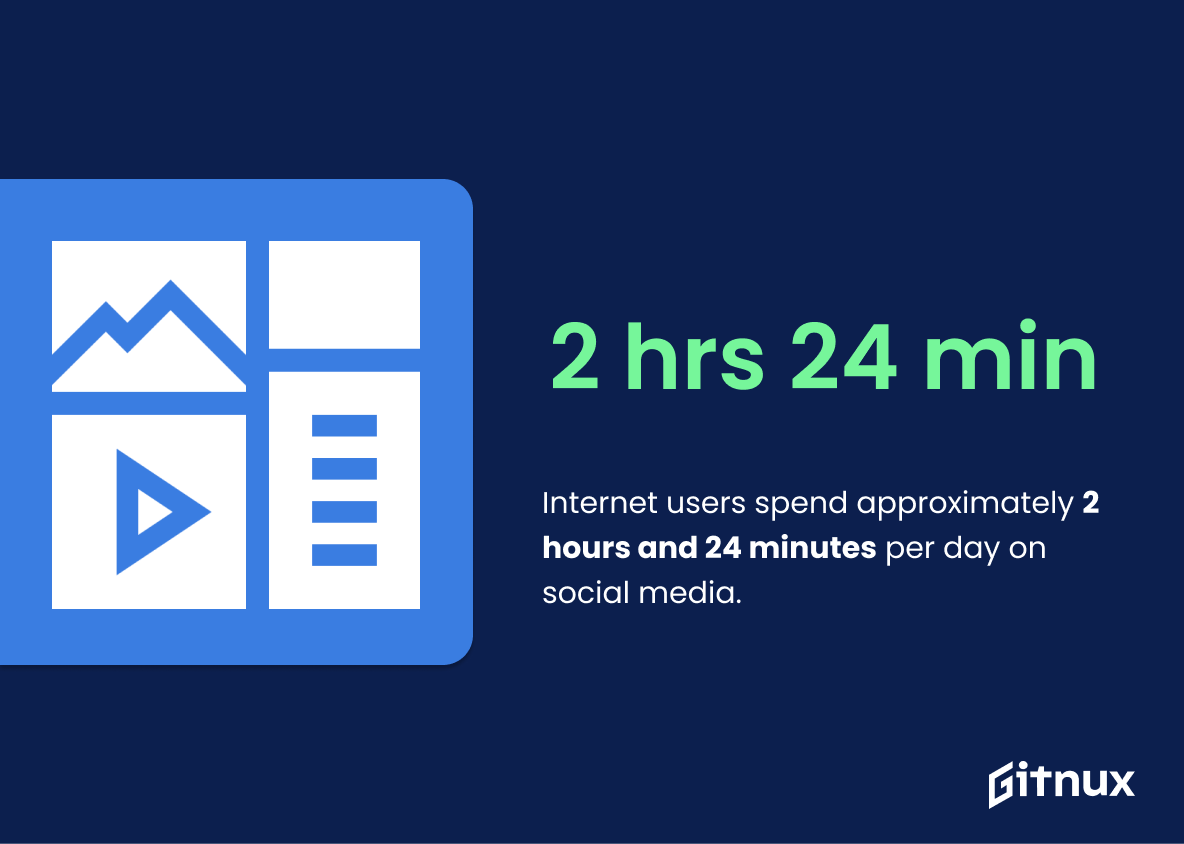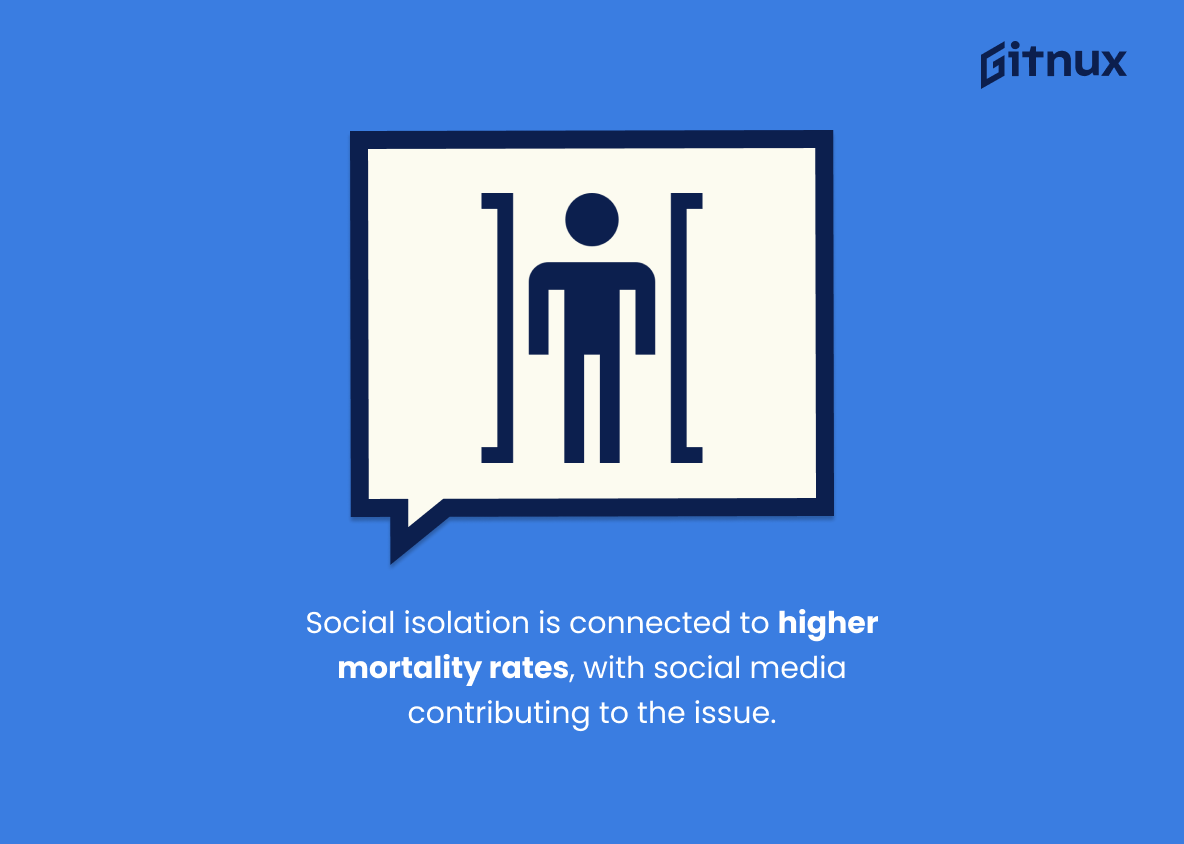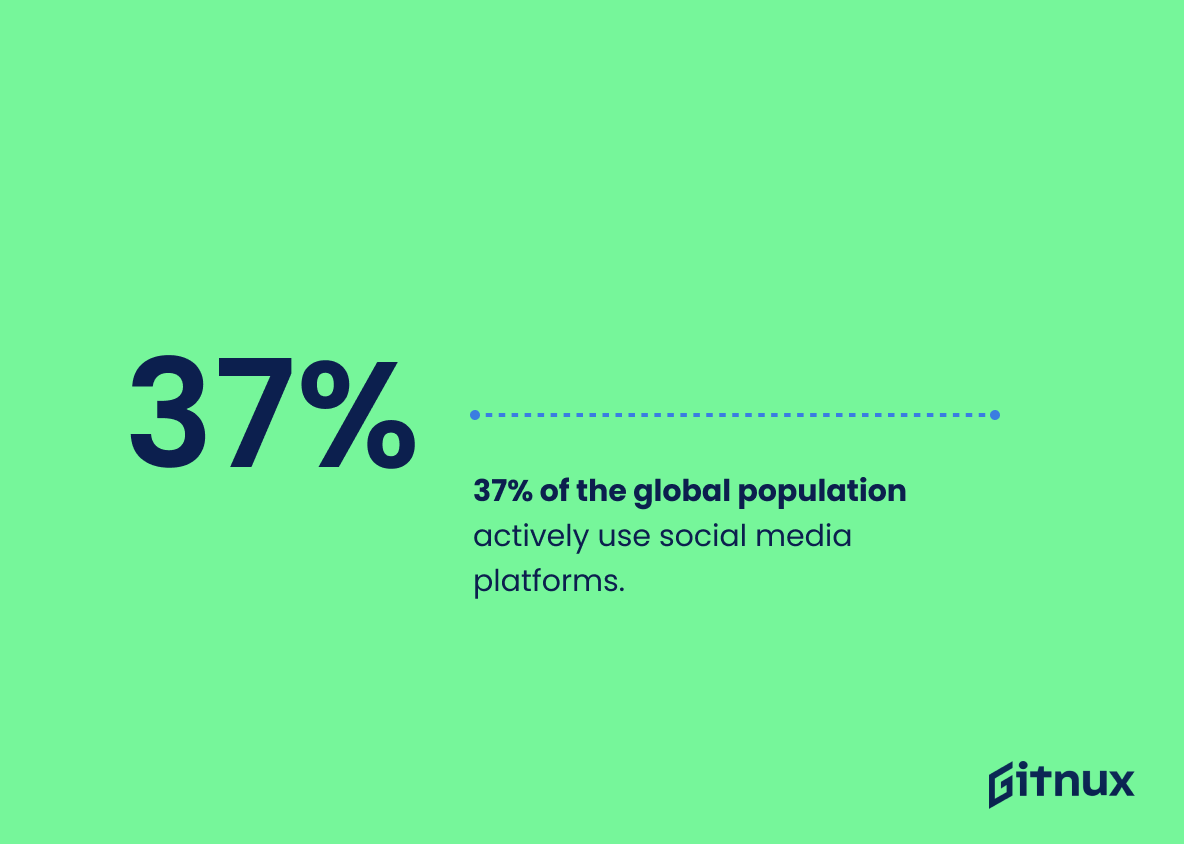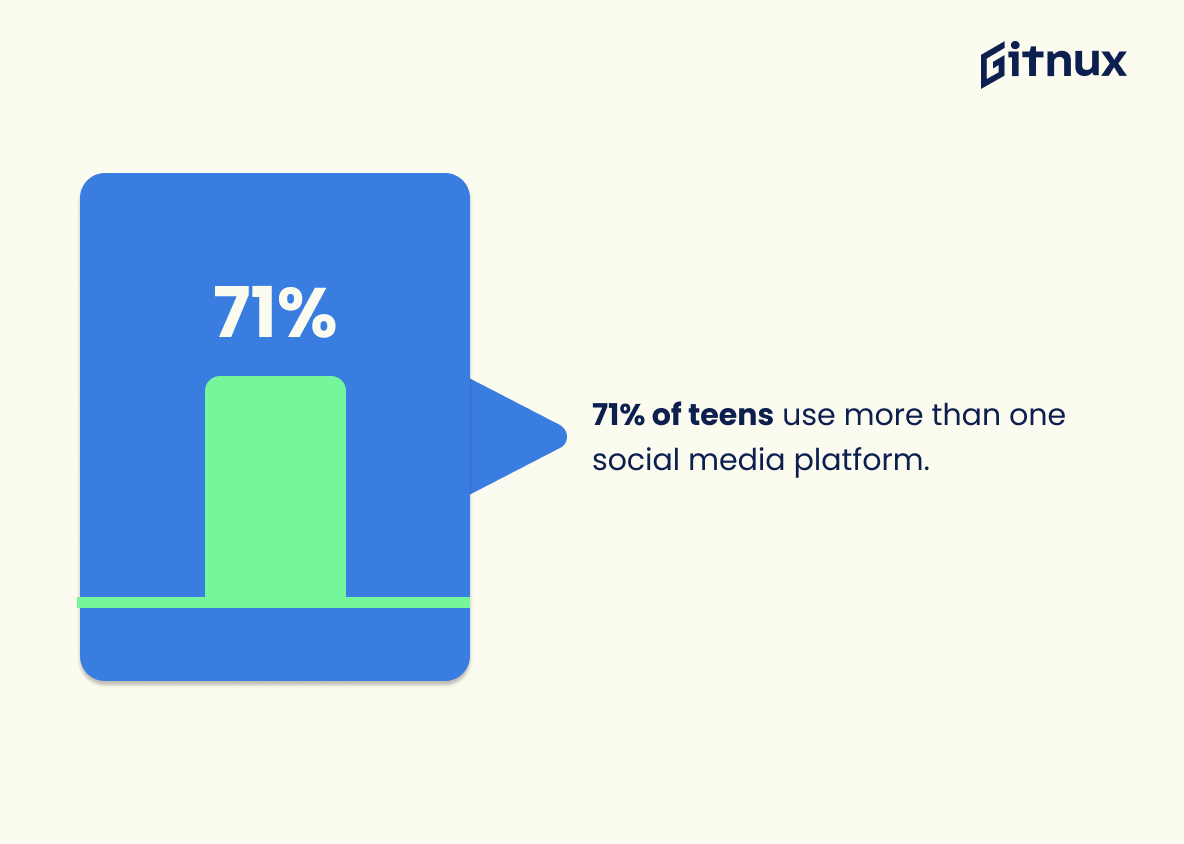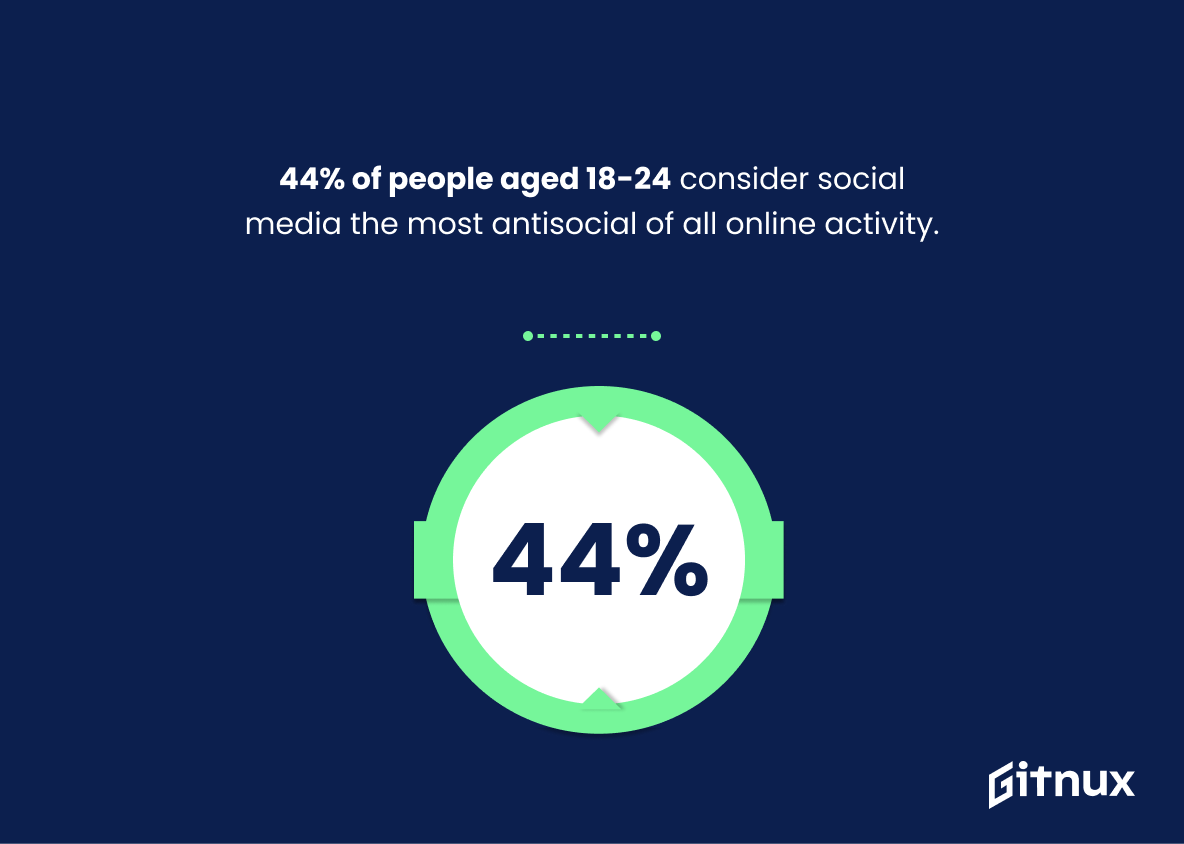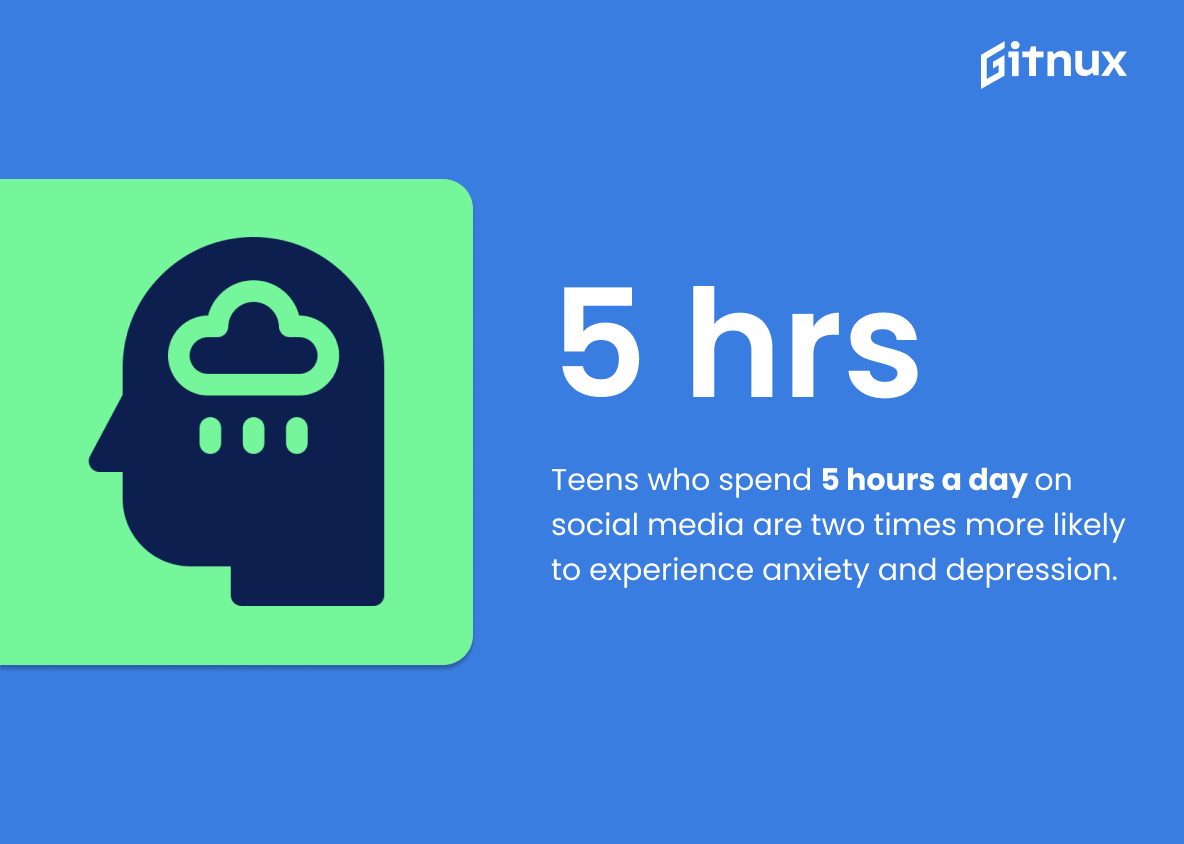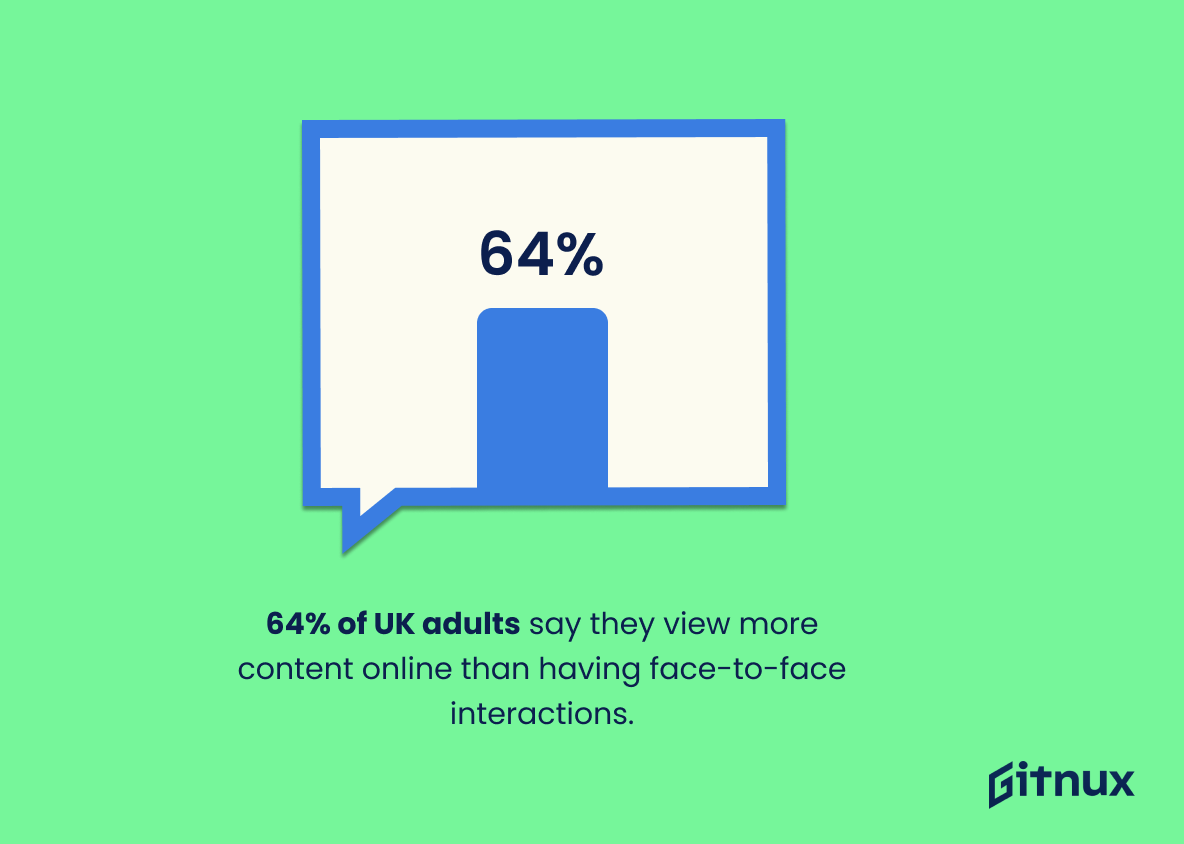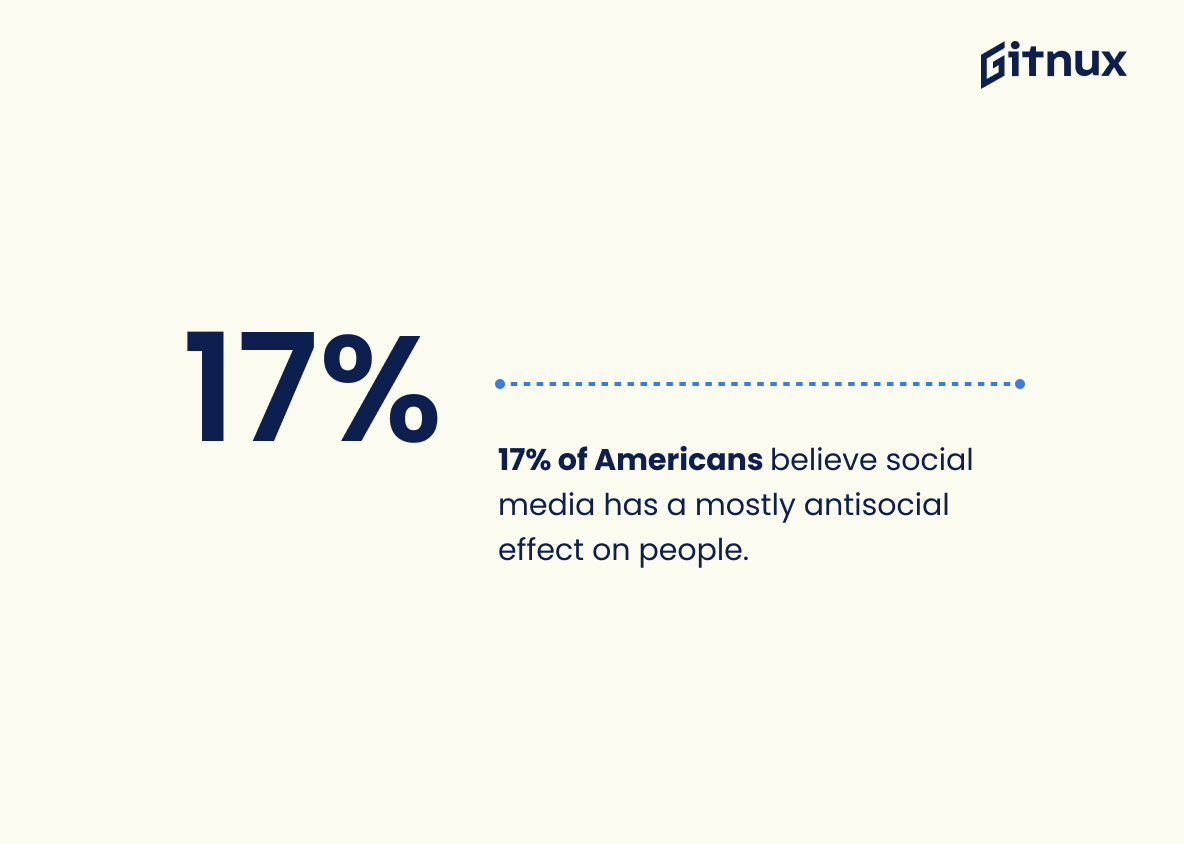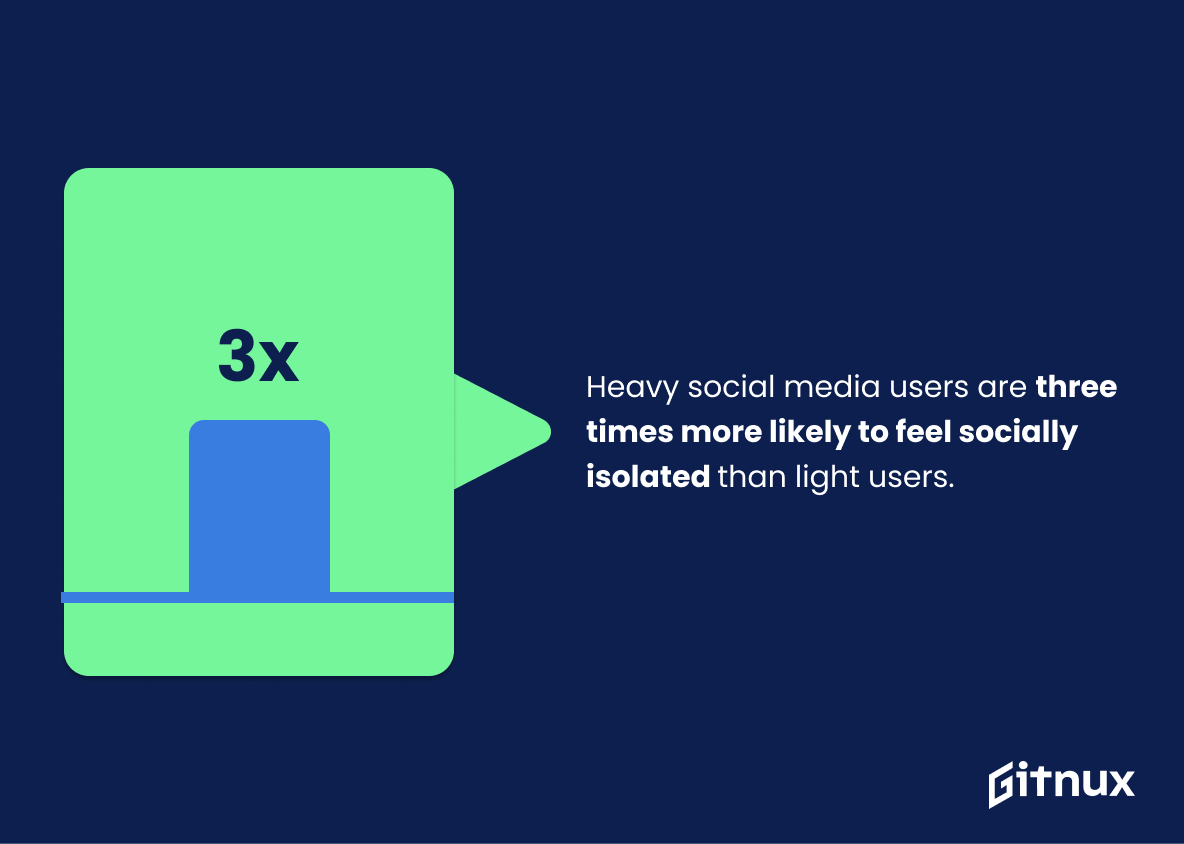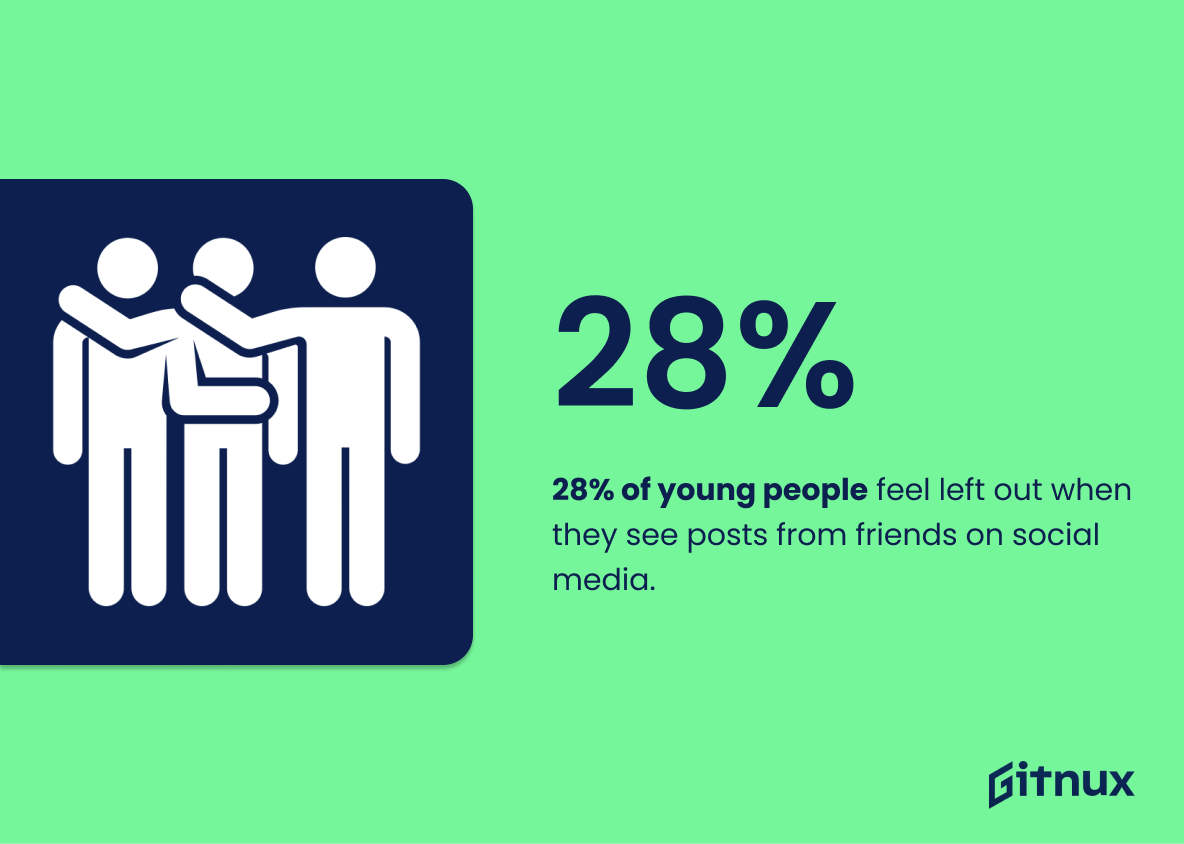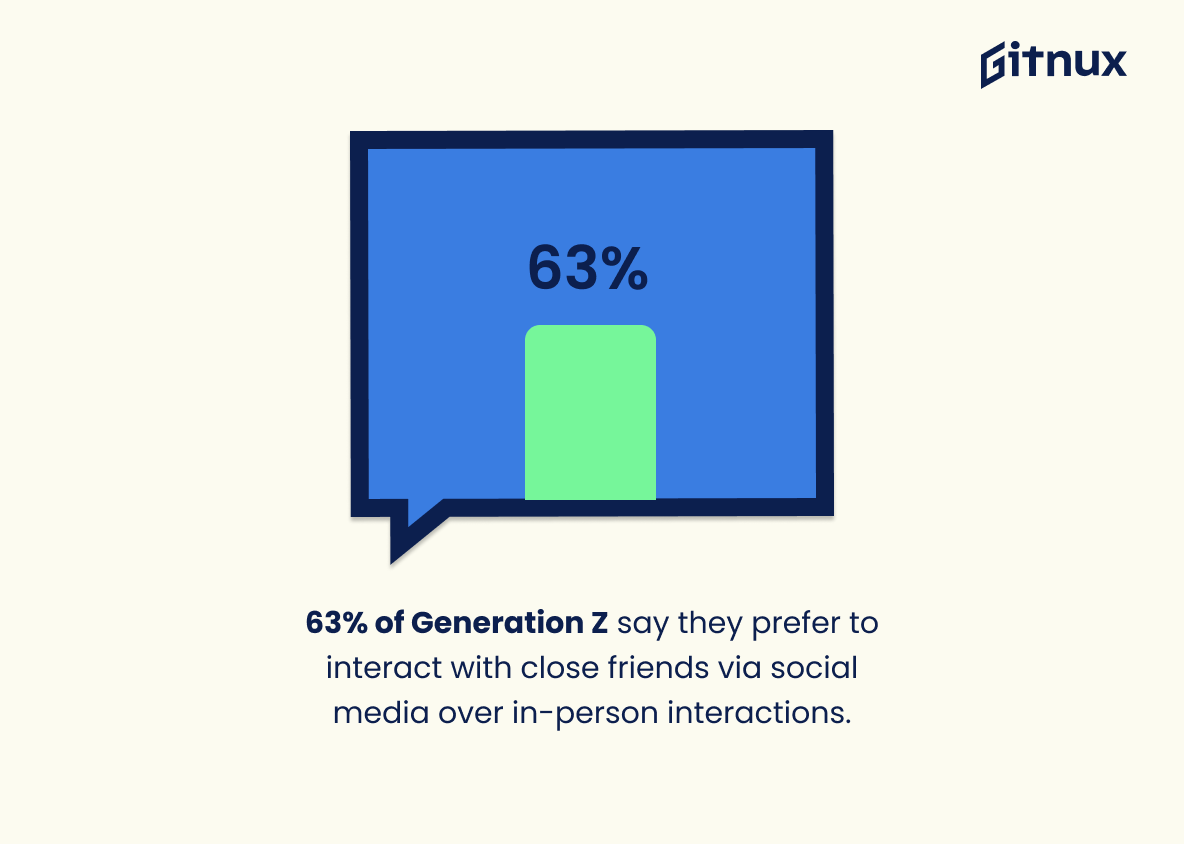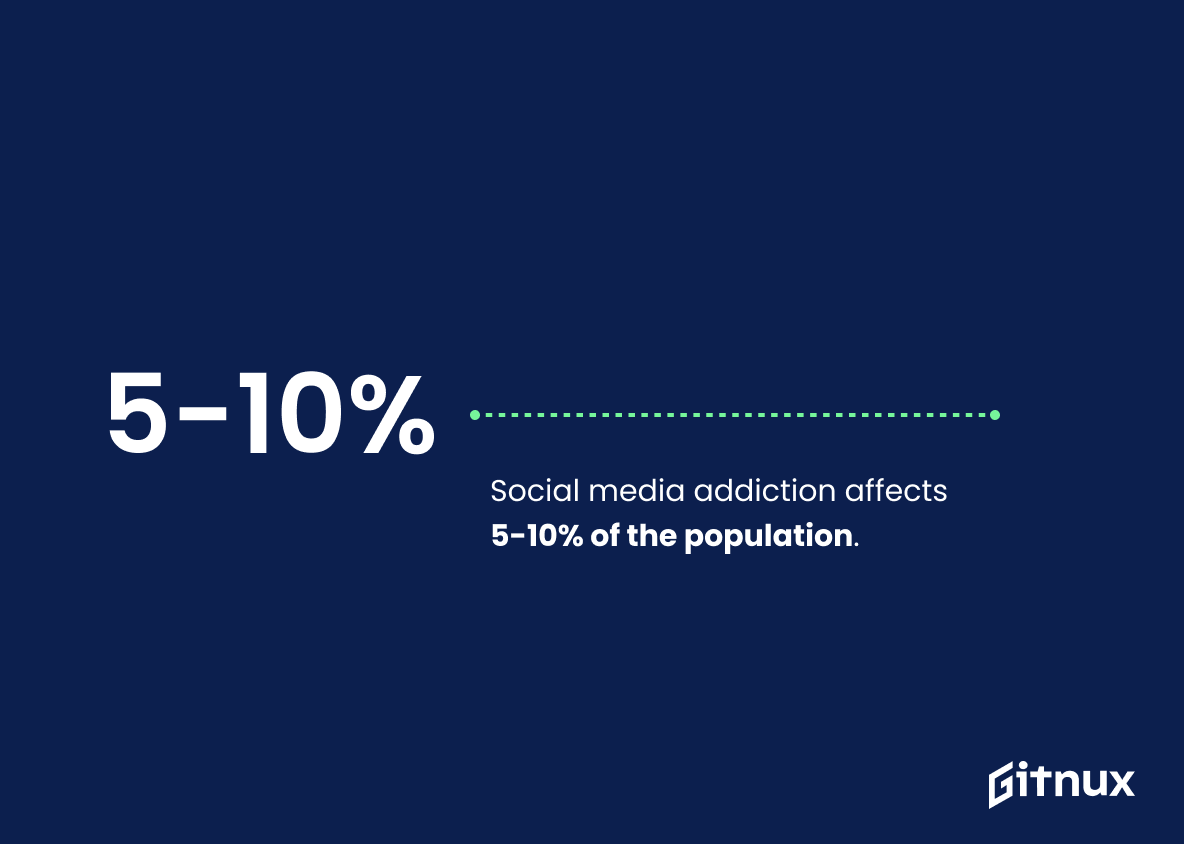Social media has become an integral part of our lives, but it can also have a negative impact on us. Recent statistics show that 73% of teenagers believe social media has a negative effect on their face-to-face social lives and 1 in 3 people feel more dissatisfied after visiting social media platforms. Internet users spend approximately 2 hours and 24 minutes per day on average using these sites, with 5% of adults having zero friends in real life due to excessive usage. Social isolation is connected to higher mortality rates, with 37% of the global population actively using such platforms and 71% teens utilizing multiple ones at once. Furthermore, 44% aged 18-24 consider this activity as being antisocial while those who use it for over two hours daily are twice as likely to experience loneliness or depression than light users. Additionally, 64 % UK adults view content online rather than engaging in conversations while 17 % Americans think its effects are mostly detrimental; heavy users three times more prone to feeling isolated compared to others too. Finally 60 % millennials prefer digital communication instead of talking directly whereas 28 & 63 percent respectively admit they’re left out when seeing posts from peers or would rather interact via messages than meeting up personally – all signs pointing towards potential addiction which affects between 5 – 10 percent globally according to recent figures.
Social Media Antisocial Statistics Overview
Internet users spend approximately 2 hours and 24 minutes per day on social media.
This statistic is a telling indication of the amount of time people are dedicating to social media, and serves as a powerful reminder of the potential for social media to be a major distraction from real-life interactions. It is a stark reminder of the potential for social media to be an antisocial force in our lives, and a blog post about social media antisocial statistics should take this statistic into account.
Social isolation is connected to higher mortality rates, with social media contributing to the issue.
This statistic is a stark reminder of the potential consequences of social media use. It highlights the importance of maintaining meaningful connections with others, both online and offline, in order to ensure our physical and mental wellbeing. It also serves as a warning that excessive use of social media can lead to social isolation, which can have serious implications for our health.
37% of the global population actively use social media platforms.
This statistic is a powerful indicator of the immense influence social media has on our lives. It demonstrates the sheer number of people who are engaging with social media platforms, and the potential reach of these platforms. This is especially relevant to the blog post about Social Media Antisocial Statistics, as it provides a baseline for understanding the scope of the issue.
71% of teens use more than one social media platform.
This statistic is a powerful indicator of the prevalence of social media in the lives of teens today. It demonstrates that the majority of teens are engaging with multiple social media platforms, suggesting that social media has become an integral part of their lives. This is an important point to consider when discussing the potential antisocial effects of social media, as it shows that teens are heavily invested in the platforms and may be more likely to be affected by them.
44% of people aged 18-24 consider social media the most antisocial of all online activity.
This statistic is a powerful indicator of the impact social media has had on the younger generation. It speaks to the fact that a large portion of the population aged 18-24 view social media as a negative force in their lives, and that it has become a source of antisocial behavior. This statistic is important to consider when discussing the effects of social media on society, as it provides insight into how the younger generation perceives the platform.
Teens who spend 5 hours a day on social media are two times more likely to experience anxiety and depression.
This statistic is a stark reminder of the potential mental health risks associated with excessive social media use. It highlights the importance of monitoring and limiting the amount of time teens spend on social media, as it could have a significant impact on their mental wellbeing.
64% of UK adults say they view more content online than having face-to-face interactions.
This statistic is a telling indication of the impact that social media has had on our lives. It highlights the fact that more and more people are turning to online content for their social interactions, rather than engaging in face-to-face conversations. This shift in behavior has implications for how we interact with each other, and how we form relationships. It is an important statistic to consider when discussing the effects of social media on our society.
17% of Americans believe social media has a mostly antisocial effect on people.
This statistic is a powerful indicator of the public’s perception of social media’s impact on people. It shows that a significant portion of the population believes that social media has a mostly negative effect on people. This is an important piece of information to consider when discussing the effects of social media on society, as it provides insight into how people view the platform and its potential consequences. This statistic can be used to further explore the issue of social media’s impact on people, and can be used to inform the discussion in a blog post about social media antisocial statistics.
Heavy social media users are three times more likely to feel socially isolated than light users.
This statistic is a stark reminder of the potential dangers of overusing social media. It highlights the fact that, despite the many benefits of social media, it can also be a source of social isolation if used excessively. This statistic is an important reminder that, while social media can be a great way to stay connected, it should be used in moderation to avoid feeling socially isolated.
60% of US millennials prefer online communication compared to face-to-face interactions.
This statistic is a telling indication of the impact that social media has had on the way millennials communicate. It highlights the shift away from traditional face-to-face interactions and towards digital communication, which has become the norm for many millennials. This statistic is important to consider when discussing the antisocial effects of social media, as it demonstrates how the platform has changed the way people interact with one another.
28% of young people feel left out when they see posts from friends on social media.
This statistic is a stark reminder of the potential negative effects of social media on young people. It highlights the fact that, despite the potential for social media to bring people together, it can also have the opposite effect, leaving some feeling isolated and excluded. This is an important issue to consider when discussing the antisocial statistics of social media.
63% of Generation Z say they prefer to interact with close friends via social media over in-person interactions.
This statistic is a telling indication of the impact that social media has had on Generation Z’s social lives. It suggests that the majority of this generation are more comfortable interacting with their close friends online rather than in person, which could be a sign of the growing trend of social media-induced isolation. This statistic is an important piece of evidence to consider when discussing the antisocial effects of social media.
Social media addiction affects 5-10% of the population.
This statistic is a stark reminder of the prevalence of social media addiction in our society. It highlights the fact that a significant portion of the population is affected by this issue, and that it is a problem that needs to be addressed. This statistic is an important part of the conversation about social media antisocial statistics, as it provides a tangible measure of the impact of social media addiction on our society.
Conclusion
The statistics presented in this blog post demonstrate the negative impact of social media on face-to-face interactions and mental health. From teens feeling more dissatisfied after visiting social media platforms to adults having zero friends due to excessive usage, it is clear that spending too much time online can lead to feelings of loneliness and isolation. Furthermore, research has shown a correlation between heavy use of social media and increased rates of anxiety and depression among young people. It is important for users to be aware of these risks when using digital technology so they can take steps towards maintaining healthy relationships both online and offline.
References
0. – https://www.buffer.com
1. – https://www.cnn.com
2. – https://www.smallbiztrends.com
3. – https://www.digitalinformationworld.com
4. – https://www.coursehero.com
5. – https://www.apa.org
6. – https://www.inverse.com
7. – https://www.pewresearch.org
8. – https://www.postoffice.co.uk
9. – https://www.commonsensemedia.org
10. – https://www.mobilemarketer.com
11. – https://www.kinsta.com
12. – https://www.pcmag.com
13. – https://www.telegraph.co.uk
14. – https://www.newatlas.com
ZipDo, cited June 2023: Social Media Antisocial Statistics
